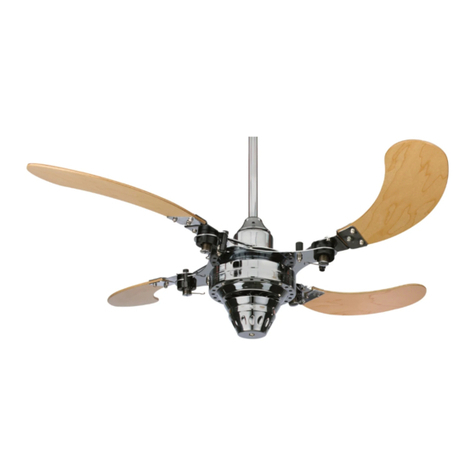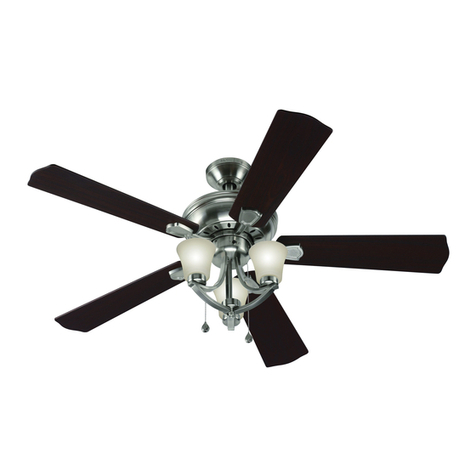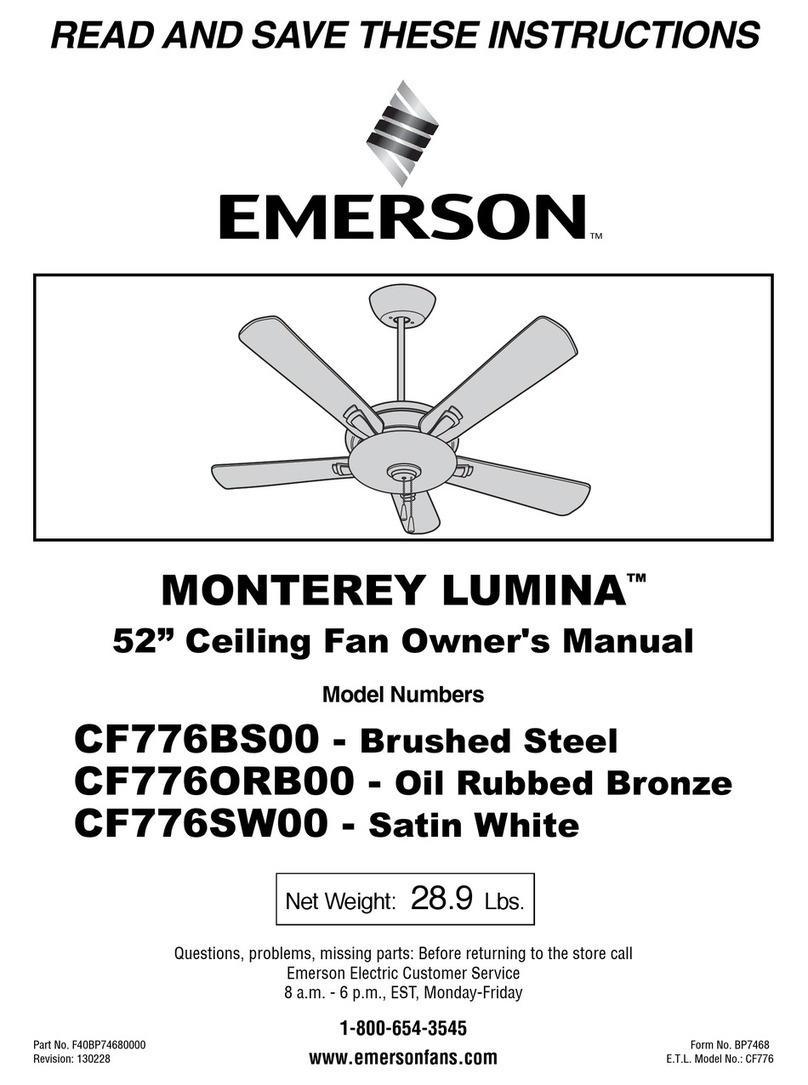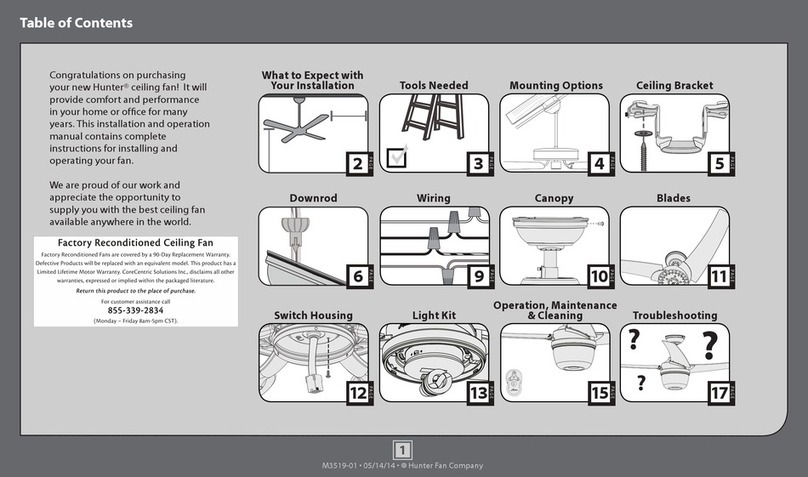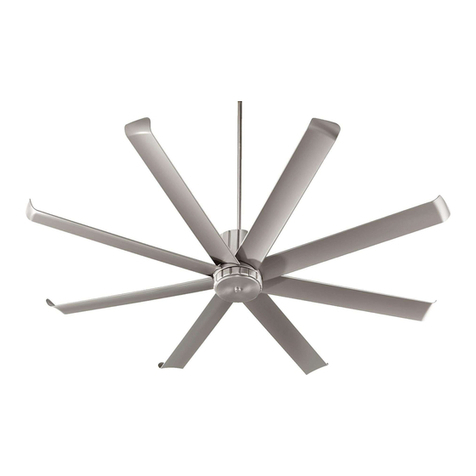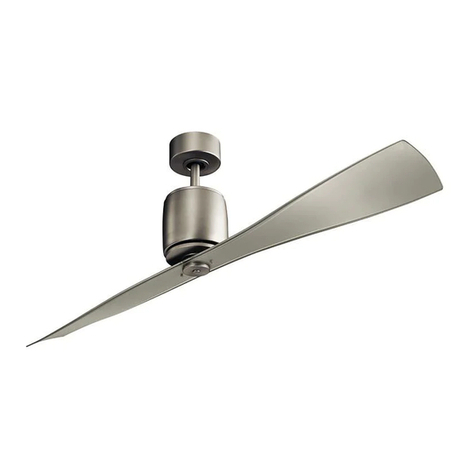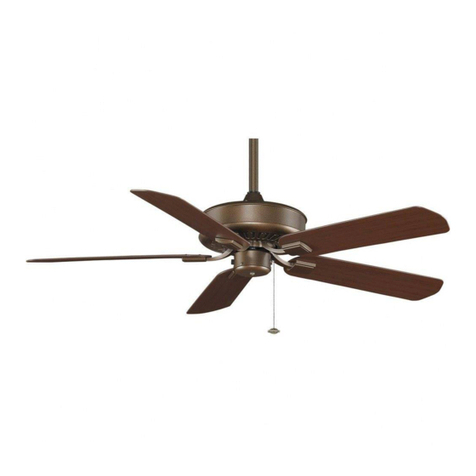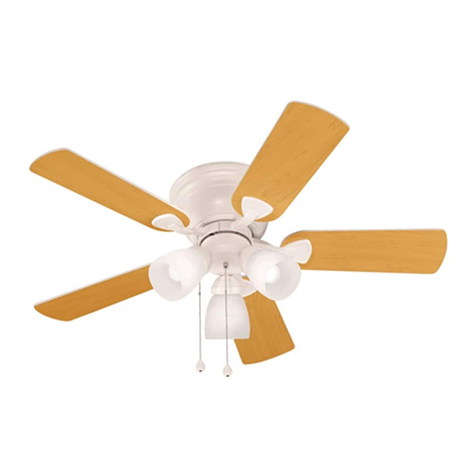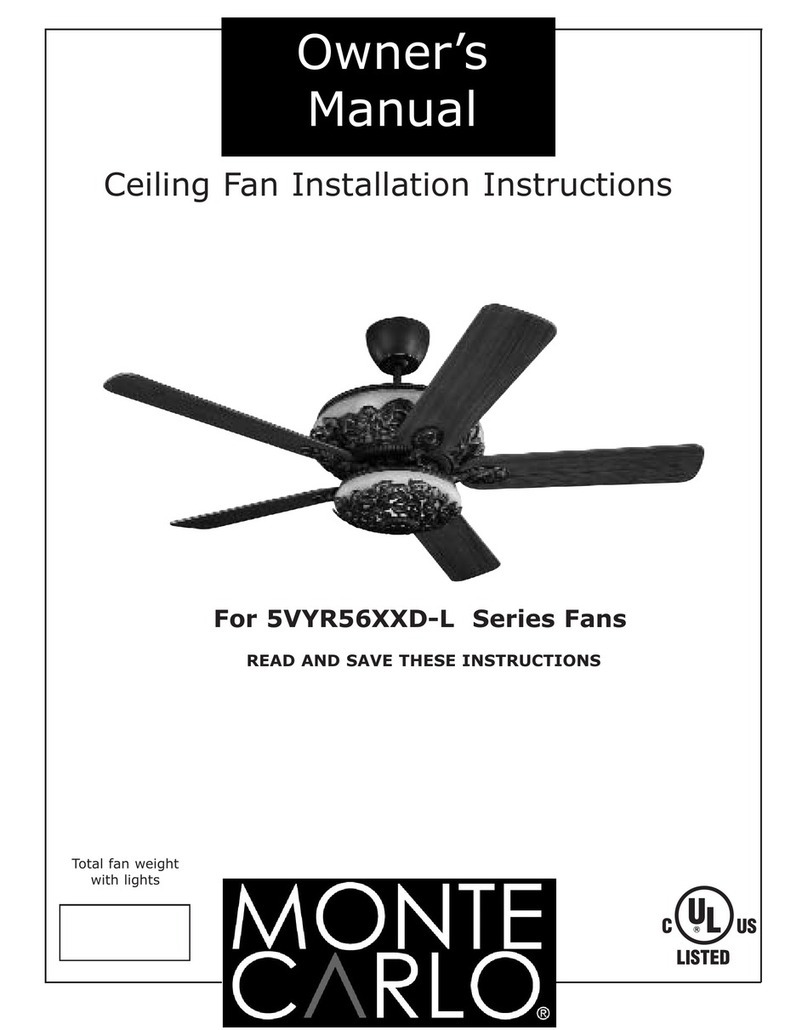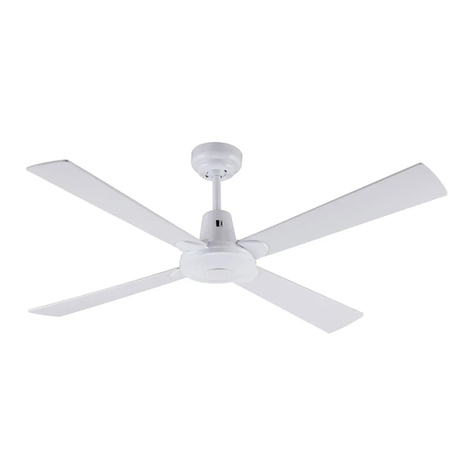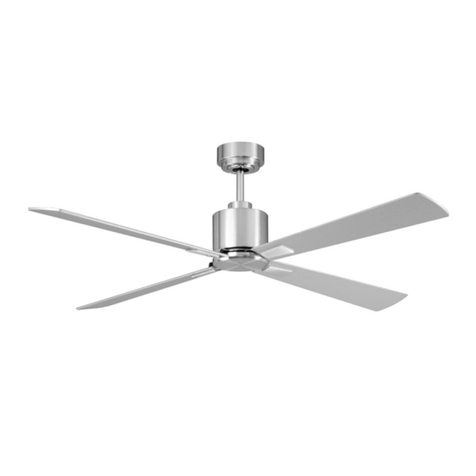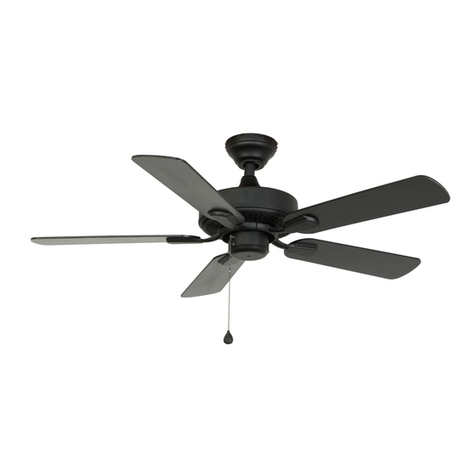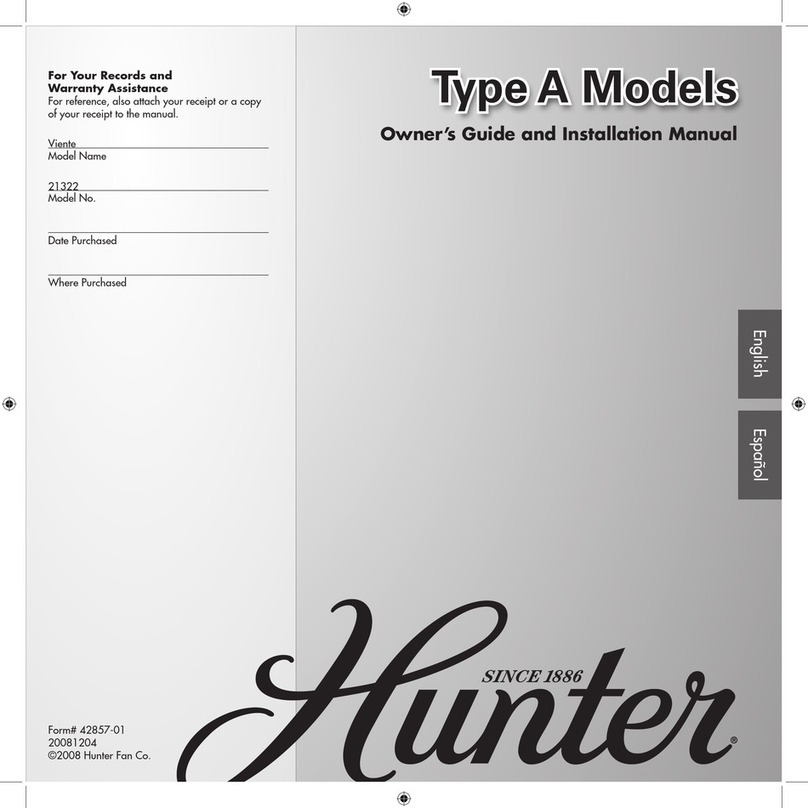
Installation work and electrical wiring must be done by qualified person(s) in accordance with applicable codes and standards (ANSI/NFPA 70-
1999), including fire-rated construction.
Use this unit only in the manner intended by the manufacturer. If you have any questions contact the manufacturer.
After making the wire connections, the wires should be spread apart with the grounded conductor and the equipment-grounding conductor on
one side of the outlet box and ungrounded conductor on the other side of the outlet box.
Before you begin installing the fan, Switch power off at Service panel and lock service disconnecting means to prevent power from being
switched on accidentally. When the service disconnecting means cannot be locked, securely fasten a prominent warning device, such as a tag,
to the service panel.
Be cautious! read all instructions and safety information before installing your new fan. Review the accompanying assembly diagrams.
When cutting or drilling into wall or ceiling, do not damage electrical wiring and other hidden utilities.
Make sure the installation site you choose allows the fan blades to rotate without any obstructions. Allow a minimum clearance of 7 feet from
the floor to the trailing edge of the blade.
WARNING – Risk of fire, electric shock, or personal injury, The fan in this box may be either directly supported from a structural framing mem-
ber of a building and/or may be mounted to an outlet box marked acceptable for fan support of 16 kg. (35 lbs.) or less. Most outlet boxes com-
monly used for the support of luminaires may not be acceptable for fan support and may need to be replaced. Consult a qualified electrician if in
doubt.
Do not bend blade holders during installation to motor, balancing or during cleaning. Do not insert foreign object between rotating blades.
Attach the mounting bracket using only the hardware supplied with the outlet box.
To reduce the risk of fire or electric shock, do not use this fan with any solid state fan speed control device, or variable speed control.
If this unit is to be installed over a tub or shower, it must be marked as appropriate for the application.
NEVER place a switch where it can be reached from a tub or shower.
The combustion airflow needed for safe operation of fuel-burning equipment may be affected by this unit’s operation. Follow the heating equip-
ment manufacturer’s guideline safety standards such as those published by the National Fire Protection Association (NFPA), and the American
Society for Heating, Refrigeration and Air Conditioning Engineers (ASHRAE) and the local code authorities.
Before servicing or cleaning unit, Switch power off at Service panel and lock service disconnecting means to prevent power from being switched
on accidentally. When the service disconnecting means cannot be locked, securely fasten a prominent warning device, such as a tag, to the
service panel.
1.
2.
3.
4.
5.
6.
7.
8.
9.
10.
11.
12.
13.
14.
15.
Installation
WARNING: TO REDUCE THE RISK OF FIRE, ELECTRIC SHOCK, OR INJURY TO PERSONS,
OBSERVE THE FOLLOWING: READ AND SAVE THESE INSTRUCTIONS
SAFETY TIPS
TOOLS REQUIRED
Phillips Screwdriver Wire Cutters Pliers Step Ladder
Before you begin installing the fan, Switch power off
at Service panel and lock service disconnecting means
to prevent power from being switched on accidentally.
When the service disconnecting means cannot be
locked, securely fasten a prominent warning device,
such as a tag, to the service panel.
1
Install canopy and yoke cover over
the downrod. Thread wire through
downrod with canopy and yoke cover
assembled.
6
Warning-Risk of fire, electric shock, or person-
al injury. The fan in this box may be either
directly supported from a structural framing
member of a building and/or may be mounted
to an outlet box marked acceptable for fan sup-
port of of 16 kg (35 lbs) or less. Most outlet
boxes commonly used for the support of lummi-
naires may not be acceptable for fan support
and may need to be replaced. Consult a quali-
fied electrician if in doubt.
2OUTLET BOX METHOD
Loosen the 2 set screws. You should
be able to put your downrod into the
yoke.
5
Remove the keeper pin and cotter
pin.
4
Install the Mountiing Bracket to the
Outlet box. Use only the screws
provided with the outlet box.
3
